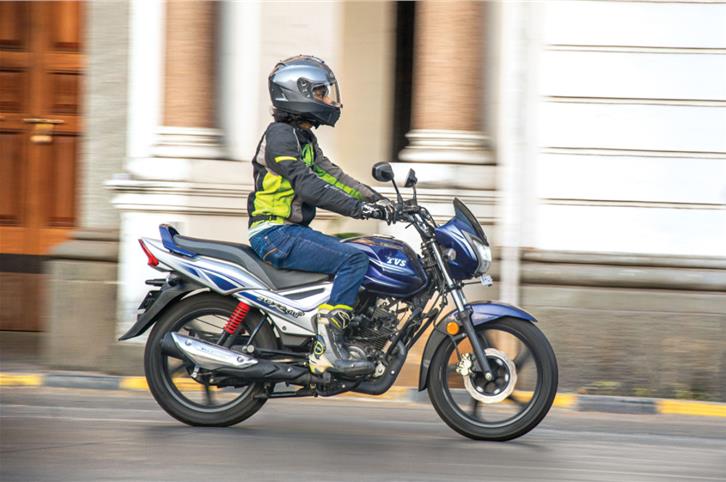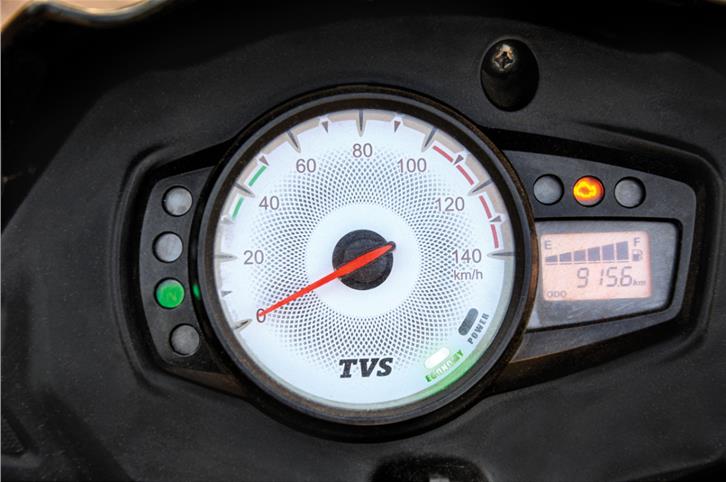We take a spin on TVS' 110cc commuter to get an idea of where the segment stands in the BS6 era.
Published on May 14, 2022 07:00:00 AM
12,074 Views
Follow us on
The TVS Star City Plus doing what it does best: zipping across the city.

Basic instrumentation lacks a trip meter.
It has been some length of time since last time I rode a commuter motorcycle for any appreciable duration. Not that long ago, they were no-frills, bare-bones workhorses fed by carburettors. When I walked up to the TVS Star City Plus, I was greeted by a fuel-injected motorcycle complete with an LED headlight and even a USB charger! The 8.5 lakh rupee Ducati Scrambler that I also rode around the same time as this has neither of those two features as standard!
.jpg&c=0)
Curious to see whether the riding experience had evolved as much as the brochure, I eagerly jumped aboard. My memories of this segment were created mostly aboard motorcycles made by the untouchable market leader, Hero - memories of smooth, but fairly unexciting engines. The Star City’s motor doesn’t necessarily conform to that template. It sits at the lower end of the spectrum when it comes to power and torque figures, even by this segment’s standards. But in the real world, it actually feels reasonably adequate – no asthmatic wheezing when you demand prompt acceleration.
It’s a 110cc commuter, so don’t expect it to set dragstrips on fire, but you’re not going to be a liability on the roads, even on highways. And more importantly, it feels quite engaging to ride, aided by a precise and satisfying 4-speed gearbox (the Bajaj Platina remains the only bike in this segment to get five cogs).
But this has somewhat come at the compromise of refinement. While many of TVS’ other engines set segment benchmarks for vibration levels, the Star City doesn’t quite live up to those standards, with its motor feeling a little gruff. This is especially pronounced when you rev it out, but present to a certain degree at most times while riding. Fuelling also has a little room for improvement, the snatchy off-on throttle response from the fuel-injection system not quite as satisfying as the natural, smooth feeling the carburetted commuters of old used to provide.
The non-conformism of the Star City extends to the chassis department as well, in the form of 17-inch wheels compared to the industry standard 18-inchers. Despite this, it rides rather well on its relatively soft suspension set-up, doing a decent job of flattening out our roads. This being a commuter, it isn’t expected to be a corner carver, and so high-speed handling is quite numb and unnerving on its skinny tyres. But this behavior is on par with any of the other motorcycles in this segment. On the upside, it does feel nimble and agile when filtering through city traffic, and the commuter-typical clutch feels as light as the bike does.
And despite the fancy features mentioned above, the Star City still misses out on some fundamentals – the basic instrumentation lacks even a trip meter. A side-stand indicator would also have been nice.
In summation, the Star City breaks format in the 110cc commuter class by delivering a fairly entertaining riding experience, but sacrifices (to some extent) segment hallmarks like engine refinement. At Rs 72,255 for this Disc variant, it’s priced on par with rivals from Hero, and offers a different, but more engaging riding experience.
Copyright (c) Autocar India. All rights reserved.

Maruti Suzuki plans to use the Boosterjet engine in more models. Which one would you like to see it in?
Comments
Member Login
Personal Details
Vivek singh - 334 days ago
Thank you for taking the time to write such a thorough review.